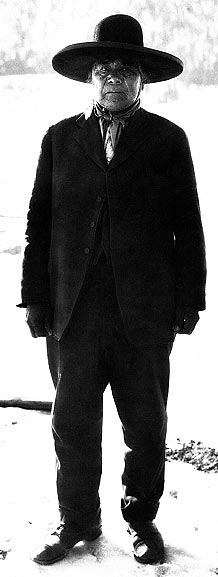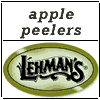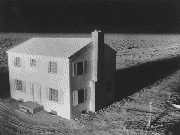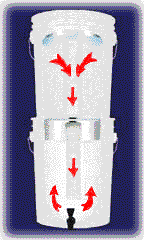
THE ART OF MAKING ALCOHOL
|
By Kurt Saxon
Visit Kurt Saxon's Home Page:
www.survivalplus.com
I had intended to write an article tellingyou how to make about a quart of
90 proof alcohol for less thana dollar.
So I gathered up all the books I had concerningalcohol and set out to master
the process on a small scale. MyEmporium of Arts and Sciences of 1814 told
of whisky productionin Lancaster County, PA. In a year, from 611 stills,
3,295,500gallons, or 5,394 gallons per still, or an average of 14.77 gallonsper
still per day was produced. Going by the low level of technologyin 1814 the
process had to be pretty simple. And it is.
Whiskey. In Lancaster county, Pennsylvania,during a year ending with April
1814, six hundred and eleven stills,manufactured 3,295,500 gallons of
whiskey.
But try finding that simple process in a modernbook. Most of the books on
the subject are frauds. No beginnercould learn how to make ethyl alcohol
from any of them.
Take "The Moonshiner's Manual", bya man calling himself Michael Barleycorn,
copyright 1975. Thebook is entertaining, cleverly illustrated, but filled
with misinformationand nonsense. I'll criticize it, but only to show you
why youcan't depend on such books to live up to their claims.
.htm) When
you buy a book tellingyou how to do something illegal, to complain that it
is inaccurateis almost an admission that you're up to no good. The publisherbanks
on that. That's why shady outfits like Delta, Paladin andButokukai keep cranking
out garbage to sell to suckers. Bookswith sensational titles and seductive
ad copy, but with nothingof value between the covers. When
you buy a book tellingyou how to do something illegal, to complain that it
is inaccurateis almost an admission that you're up to no good. The publisherbanks
on that. That's why shady outfits like Delta, Paladin andButokukai keep cranking
out garbage to sell to suckers. Bookswith sensational titles and seductive
ad copy, but with nothingof value between the covers.
Getting back to "The Moonshiner's Manual",it says to put 25 pounds of cracked
corn in a gunny sack and soakit in a tub of warm water for three days! It
suggests that naturalfermentation will come into play. What you would get
in that threedays would be 25 pounds of, not fermented, but rotted corn.
Thenyou are supposed to put the corn, sack and all, into the vat with30 pounds
of pure cane sugar and 1-2 quarts of molasses.
In a later, scaled down recipe, he calls for2 1/2 to 5 pounds of cracked
corn, in a small sack, 5 to 10 poundsof sugar and 1 pint of molasses or 1
cup of unflavored malt.
The corn, sack and all, is to be put into thefermenting vat. Insane! The
part about the gunny sack is an oldtechnique for sprouting the corn.
Sprouting, or malting, turns most of the starchinto sugars and diastase.
The sugars are readily converted intoalcohol by yeast and the diastase acts
on the remaining starchto turn it into dextrine, also quickly acted on by
the yeast.
The gunny sack is filled with whole, non-hybridcorn, not cracked. The sack
is immersed in a tub of warm waterand left for 24 hours, then drained. Then
it is flooded with warmwater once every 24 hours until it expands and bursts.
These aresprouts. Plenty of dextrine and diastase. No cane sugar is needed.To
throw the sack into the fermenting vat would be stupid.
The sprouted grain is then pulverized and putin the fermenting vat. Water
and yeast are added and the fermentationproceeds apace
Both recipes call for molasses, which is unnecessary.
It should be obvious that Michael wrote thebook to sell to suckers and had
no real knowledge of moonshining.
He goes into great detail about the penaltiesattached to moonshining. This
has a purpose and is a paradox atthe same time. First, he's scaring the average
reader out of anynotion of making his own booze. This keeps most from trying
thetechniques, finding them useless and demanding refunds. The paradoxarises
in the fact that no one could use these instructions formaking alcohol, thus,
the warnings are unnecessary.
Another book, and a good one, is "Solargas",by David Hoye, 1979. This is
about fuel. Hoye goes to great lengthsto make sure the smallest batch is
poisoned by denatured alcohol,lest a sip pass the lip.
Only one page tells of making alcohol fromground, unsprouted corn. All other
references are to sproutedcorn.
There are two bars to making booze by followingthis book. The first is the
constant harping on getting Federalpermission and filling out all those forms.
This intimidates.The second is that you can no longer buy non-hybrid corn
at yourlocal feed and seed store. It is all hybrid and only about 10%will
sprout, leaving 90% a rotten mess. You have to buy it froma farmer who grows
non-hybrid corn or grow it yourself.
I didn't know this until I began researching.I meant to use Hoye's book to
make alcohol and then tell you how.I processed two pounds of corn and was
surprised to see that onlyone out of ten grains sprouted. The rest rotted.
Rotted starchdoesn't convert to alcohol.
There are several alcohol for fuel books onthe market. Most of them are
inaccurate and therefore fraudulent.Even the best were published with doubtful
sincerity. I'm suretheir publishers realized that nine out of ten buyers
of the bookshad no intention of converting their vehicles to alcohol.
Consider;you can modify your vehicle's engine to run on alcohol, propane,methane,
diesel etc. Then, when you're on the road and run outof fuel you don't just
turn into the nearest gas station, turna knob on your engine and reconvert
to gasoline. No. If you convert,you're stuck with it until you convert back.
Moreover, aside from all the forms and bureaucracywith the Feds, converting,
even for farm vehicles, isn't cost-effective.And if you intend to go commercial,
you face a starting cost ofmaybe a hundred thousand dollars, not to mention
bucking the competition.
So, I repeat my contention that the averageguy who buys a book on making
alcohol wants to save on his liquorbills. With what you are going to learn
here, you will never needto buy booze again, much less another silly book
on making it.
But before we go into that, let me explainthe law. You can distill alcohol
if you pay the liquor tax onit. So if you don't pay the liquor tax, with
all the red tapethat involves, the bottom line is that you are guilty of
tax evasion.
Sure, they can jail you, take everything youhave, put your wife on the street,
sell your kids. I'm not reallykidding!
But so what? If you're making your own, howcan anyone know what you do when
you're alone?
Even so, let's say the Feds wanted to harassyou. They have to prosecute,
in these days of overcrowded jailsand backed-up court dockets. Then they
have to prove to a jurythat your still was for making alcohol, instead of
for purifyingwater as is done in hundreds of thousands of homes, with
stillsbought mainly from Sears.
Or maybe you admit you made the still but it'sa lab still for ever so many
uses, even for purifying water. Unlessthey catch you in the act of distilling
alcohol, how could theyprove it to a jury?
Many people have asked me if it is advisableto carry a concealed weapon.
I ask them if they have ever beensearched by the police. The answer has always
been no.
So I ask what makes a person think he willbe searched after he begins to
carry a concealed weapon?
The same goes for distilling. Even so, I amnot encouraging you to break the
stupid law. You shouldn't evendrink. But when this system unravels a bit
more, you will havea trade which will insure your survival. The techniques
I'll showyou in this and following articles will enable you to make beer,wine,
whiskey, etc. It's easy.
The equipment won't be expensive, either. Itcan consist of a food dryer like
mine, a Corona grain mill anda pressure cooker (unless you have a Kenmore
water purifier fromSears). You will also need ten feet of 3/8 inch copper
tubing,bought at most hardware stores for 50 cents a foot. The rest isjust
odds and ends you may have or can get at little cost.
.htm) I'm
not going to writeeverything in this article because I don't have room and
it wouldbe too much to absorb at this time. Instead, I'll show you howto
make the still and how to run off a quart of very high-proofalcohol. I'm
not going to writeeverything in this article because I don't have room and
it wouldbe too much to absorb at this time. Instead, I'll show you howto
make the still and how to run off a quart of very high-proofalcohol.
It would be best for you to get a Kenmore WaterPurifier from Sears. Otherwise,
get a pressure cooker of at leastone gallon capacity. That's the pot for
the still. Mine is a teflon-coatedPresto Chicken Fryer of a one gallon capacity.
I don't know howmuch it cost new as I got it for a couple of dollars a a
garagesale. You may have to get one new but make sure it's coated asalcohol
reacts with aluminum.
You need a pressure cooker. Otherwise the alcoholwill go out into the air
if you just use any old cook pot, nomatter how close-fitting the lid. Also,
it takes a little pressureto force the fumes through, especially if the coil
isn't completelyslanted and pressure is needed to push the liquid alcohol
through.
Next get 10 feet of copper tubing. Copper isbetter than plastic or rubber.
It causes no bad taste. Also, itgives up heat into the cool water better
than plastic or rubberand will last a lifetime.
.htm) Next
get a two gallonplastic paint bucket or similar. Drill a 3/8 inch hole near
thebottom of the bucket. Next
get a two gallonplastic paint bucket or similar. Drill a 3/8 inch hole near
thebottom of the bucket.
Now for bending the coil. You do it an inchat a time and it is pretty tedious.
It takes a few minutes toget the hang of it but then you'll be moving right
along.
First, bend one end downward to connect withthe pressure cooker vent. You'll
not get the copper tubing overthe vent so you will need about two inches
of 3/8 inch latex tubing,bought at any pharmacy for about 60 cents a foot.
When you have the downward bend done, withoutcrimping it, go over about 14
inches and start on the coil itself.
Keep bending so you have circles about sixinches across. It shouldn't crimp
if you bend it gently an inchat a time. But if it does start to crimp, just
use a pair of plierson each side of the crimp to pressure it back.
When you have five or six circles, shove theend through the hole in the bucket.
Next use some GOOP to sealit inside and out. GOOP can be bought at any good
hardware store.It is a plastic sealant, quite thick and takes a couple of
hoursto set and about 24 hours to really harden.
.htm)
It has a tendency to sag and that's good. Forthe inside of the bucket, squeeze
a large dollop on a pencil andstick it down to the tubing in the hole. Work
it around and underand it will sag evenly and flow around the tube and rest
on thebottom of the bucket.
Then take the tube of GOOP and squeeze somearound the outside tubing. After
a few minutes it will sag and,with the pencil, pull up the sag and place
it back around thetube and it will begin to harden. A day later it will be
hardand your condenser will be water-tight forever.
If the end of the tube protrudes only a coupleof inches from the condenser
and that's not enough to reach overthe stove to flow into the container,
you can attach a few inchesof latex tubing to it so it will be long enough.
Now you want to find the proper temperaturefor distilling. Put a gallon of
water in the pot and set it toboiling. Then turn down the heat to a rolling
boil and mark thesetting on the stove or hot plate so you can just set it
in placefrom then on.
Alcohol boils at 173 degrees F and water boilsat 212. The rolling boil is
slightly lower but much hotter thanneeded to vaporize alcohol. But that's
alright. So some waterwill come over. But the alcohol will flow with the
higher temperature.When the alcohol is out the flow will stop and be replaced
bya trickle which will be water and the distilling will be finished.
To test the system, and so you can do somethingright away, buy a gallon of
cheap wine with an alcohol contentof 10-13%. When I was a bum I would pour
a gallon of $3.00 Burgundyinto my still and put a quart jar under the spout.
When the flowof alcohol turned to a trickle of water, sure enough, I wouldhave
a quart of about 90 proof alcohol. It added up to at least$11.00 worth of
hard liquor for only $3.00.
I would cut that with juice or whatever andhave enough to party with my friends
or have several gloriousdrunks. You can't get that crocked on 13% volume
wine.
If you have made your own still, you need tocool the condenser so the alcohol
will liquefy. If you are usinga hot plate to heat the pot, you can situate
the still by thesink. With another hole drilled near the bottom of the bucketand
another tube coming from the cold faucet, the warm water wouldbe constantly
replaced by cold as the water left the bucket byanother tube into the sink.
.htm) But
that is an awfulwaste of water and would show up on your utility bill. You
coulduse ice cubes, which is quite a job. My way was to freeze cansof water.
I would put several average cans of ice in the bucketand fill it with water.
As they melted I would just transfer acan of water back to the freezing
compartment of my fridge andreplace it with another ice can. But
that is an awfulwaste of water and would show up on your utility bill. You
coulduse ice cubes, which is quite a job. My way was to freeze cansof water.
I would put several average cans of ice in the bucketand fill it with water.
As they melted I would just transfer acan of water back to the freezing
compartment of my fridge andreplace it with another ice can.
If you have a setup by a stream, you wouldhave a faucet at the bottom of
the condenser. With the faucetopen you would replace the warm water with
buckets of cold fromthe stream.
Now to the making of basic moonshine. For thisyou will need at least one
cat-litter container. These are theperfect size for a batch of mash. They
are sold in every supermarketfor about $5.00. If you have cats, you may already
have some ormay get them from friends. Barring that, it is worth the pricefor
the container.
These containers hold about 2 1/2 gallons.A batch of mash is 1 gallon and
3 quarts, so there is plenty ofroom. You can also watch what's happening.
First you drill a quarter-inch hole in thecap and push a half-inch of two
feet of quarter-inch plastic tubingthrough and GOOP it on both sides. This
is an ingenious way ofknowing when the yeast has stopped working and the
alcohol contentis as high as it is going to go. You put the end of the tube
intoa jar of water and the carbon dioxide from the working yeast comesup
through the water in the jar. When the bubbles stop coming,or slow to a burp
every two minuets, it is ready. This also keepsyour working mash odor-free.
Next, you finely grind two pounds of corn,sprouted to about a half inch,
in your Corona grain mill. Thenget a cook pot holding over two gallons. They
are relatively cheapat Wal-Mart and can be gotten for a couple of dollars
from mostsecond-hand stores. Avoid aluminum. Use stainless steel or enamel.
Pour in two gallons of hot tap water and thenbring it to a brisk boil. Then
dribble in the ground corn meal,stirring all the while so it doesn't lump.
Cooking the mash serves two purposes. First,it breaks down the starch granules
so the yeast can more effectivelywork on them. Second, it kills any bacteria
which might otherwisespoil the mash.
After thirty or forty minutes, take the potoff the heat and put it in a dishpan
of cold water to cool itdown. It shouldn't have any lumps in it since that
would causeuneven fermentation. If you have stirred it properly, there shouldnot
be any lumps. In case there are, break them up with any handmixer.
Now for the yeast-sugar mix. Weigh out 1/2pound of sugar and put it in a
measuring pitcher. Then add hotwater until it reaches the quart mark. The
sugar should cool itto a temperature safe for the yeast. If it feels warm
but nothot, dump a package of active dry yeast (not fast-rising or actingyeast)
into the sugar and warm water. Stir it with a fork untilit dissolves. Then
put a plate over the pitcher and let it alonefor about an hour. It will be
covered with froth. Stir it againand then look to the mash.
Pour the mash into the cat-litter container.For this you will need a funnel,
lest it slop. The best funnelis one bought at any auto-supply department
and is used for puttingtransmission fluid in your engine. Cut the funnel
off nine inchesfrom the top. This will allow 1 1/2 inches down inside the
containerand 1 1/2 inches across to let the mash flow smoothly.
.htm) If
the mash is warmbut no longer hot, pour in the yeast and sugar and give the
containera few sloshes. But don't try to get it totally mixed. If it shouldbe
mixed too much, it might rise up and clog the tube. This wouldcause pressure
and blow the lid off and mash would be all overthe place. If
the mash is warmbut no longer hot, pour in the yeast and sugar and give the
containera few sloshes. But don't try to get it totally mixed. If it shouldbe
mixed too much, it might rise up and clog the tube. This wouldcause pressure
and blow the lid off and mash would be all overthe place.
If you don't use the cat-litter container,measure the one you use for at
least 2 1/2 gallons. Never fillit with the mixture past the 2 gallon mark.
Now, put the container in the warmest partof your home, but not over 85 or
90 degrees. The warmer it iswithin the safe limits, the faster it will work.
With the cap on firmly and the tube in thejar, the bubbles should appear
in an hour or so. After a few days,they will slow down and finally stop,
at least except for a burpevery couple of minuets.
Now you are ready to distill. It is too muchtrouble to separate the liquid
from the mash. The cooked mashisn't too inclined to stick. But it is a good
idea to add waterto completely fill the container when it is ready to distill
andthen to shake it well before pouring some into the still. Thusdiluted
the mash is pretty much in suspension so it won't stickor burn. Fill the
pot only two-thirds full and keep the heat atMedium.
When it heats up, the alcohol will come overin a fairly fast trickle. When
the alcohol is all out you'll noticea decrease, indicating it is only water.
Taste it. You'll know.
That is all there is to it!
So far, you've just learned the basics. Ifall this is totally unfamiliar,
you might think it is too muchto tackle. It isn't. Even so, you might make
mistakes at first.
Think of yourself as a youngster watching yourmother make a three-layer chocolate
cake with icing. She barelylooks at the the cookbook and it turns out great
and tastes wonderful.Now you try it. You follow the recipe exactly. You wind
up witha real mess.
You are not expected to do everything rightthe first time. You will blunder.
But like your mother had tolearn, to make it all look so easy, you will learn
and you willbe doing these processes while barely looking at the instructions.
Postscript:
A brief note on the quality of the images you'vejust seen. Kurt misplaced
the original file containing the photographsfor this article so I was stuck
with using the newsprint copiestaken right out of The Survivor. I am just
begining to understandall the things that can be done with Adobe's Photo
Shop imagingsoftware. Just as soon as I can, I'll "touch up" allof the above
photos in an etempt to make them look a little better
As a companion piece to this page I built another one containing an e-mail
letter to Kurt telling him how the letterwriter fared in his first attempt
at making booze using the info on this page.
Click
here toget to it.
- Cary

|
























